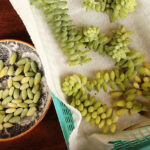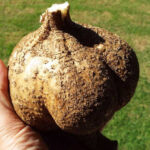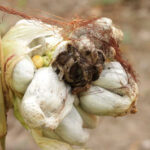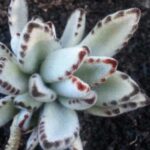If you’re looking for a hardy and forgiving houseplant, then look no further. Meet the cast iron plant, Aspidistra elatior! Also called the bar room plant, this plant has a long and storied history. This plant has been in cultivation since the early Victorian era as a houseplant. In Japan, it is a prime training plant for ikebana, the Japanese art of floral arrangement.
But it’s not limited by its pot size. Cast iron plant makes for a wonderful border plant. Its broad, long leaves create an excellent ground cover in shaded areas. Whether you choose to grow yours as an indoor plant or outside, there is a cast iron plant for you. We’ll go over a few of the most popular cultivars today. Once we’re through, you’ll know exactly how best to grow its wonderful, leafy greenery.
If you’re one of those beginner plant parents, this plant is for you. Let’s get started!
Great Products For Growing Cast Iron Plants:
- Neem Bliss 100% Cold Pressed Neem Oil
- Safer Brand Insect Killing Soap
- MycoStop Biofungicide
- Monterey Liqui-Cop Fungicide
Cast Iron Plant Overview
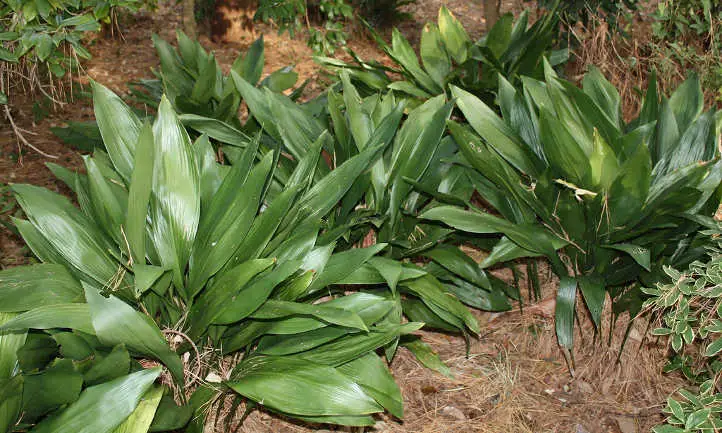
| Common Name | Cast iron plant, bar room plant, barroom plant |
| Scientific Name | Aspidistra elatior |
| Family | Asparagaceae |
| Light | Shade to partial shade |
| Water | Keep soil consistently moist |
| Soil | Well-draining soil |
| Fertilizer | Balanced houseplant fertilizer, either liquid or slow-release granular, do not over-fertilize |
| Pests | Spider mites, mealybugs |
| Diseases | Fusarium blight, fusarium rot, sclerotium stem rot |
All About the Cast Iron Plant
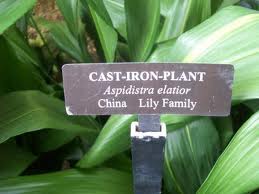
Many people mistakenly believe that cast iron plants originate in China. In reality, they come from other Asiatic regions. Taiwan and the Japanese islands are where these plants call home. Throughout the Osumi islands, Uji islands, Kuroshima, and Suwanosejima, these plants thrive.
These temperate rainforest regions are perfect for this moisture-loving species. In its native environment, it grows as an understory plant beneath evergreens. Spreading through rhizomes just beneath the soil’s surface, its leafy greenery is distinctive.
Cast iron plant has earned its name, though! It grew to popularity as a houseplant during the Victorian era. Just like cast iron, it’s hard to destroy and is remarkably tolerant to neglect. Low-light situations aren’t a problem. A relative of the lily, its vivid green leaves can reach 2 feet tall and spread up to 3 feet wide. But it’s a slow grower, which makes it another great candidate as an easy-care houseplant that can handle poor air quality among other conditions.
While cast iron plants do flower, it’s infrequent at best. Their blooms tend to be hidden among the leaves close to the soil surface. When they do appear, they’re often brownish-purple in color.
Listen to this post on the Epic Gardening Podcast
Subscribe to the Epic Gardening Podcast on iTunes or Spotify
Types of Cast Iron Plants
There are a few different cultivars that you may be interested in when deciding to grow the cast iron plant:
- Asahi: The leaf tips of the Asahi cultivar develop a dramatic white streak of color, as if kissed by the morning sun. As Asahi translates to “morning sun”, this is appropriate! The leaves can reach up to 30″ in length, and tend to be about 5″ wide. Be careful to have the right size of container for Asahi, though. The upper third of the leaves won’t develop their white tinge if it’s too small, and will remain green instead.
- Hoshi-zora: Do you like nights filled with stars? You may appreciate Hoshi-zora, a cast iron plant which has leaves decked in yellow to white “stars”. It’s name means starry sky, and the leaves certainly deliver that impression! Its leaves can reach an impressive 6″ in width, and the leaves have a mid-to-dark green coloration. The lighter speckling just enhances that green hue. Some call this aspidistra Milky Way, as there’s a specific branded variation sold by that name.
- Lennon’s Song: The center of each leaf of “Lennon’s Song” is a long golden or white flame-like shape. This central streak of color provides contrast to the dark, semi-glossy leaf around it. Interestingly, the name doesn’t reference the legendary singer associated with the Beatles. Instead, it references the man whose Florida field produced this variation, Robin Lennon.
- Okame: Where the leaves of most cast iron plants tend to be green, this one is anything but. These dramatic white-streaked leaves may be a nod to its name’s dramatic origins. Okame is a character in Japanese Kyogen theatre, but is also the name of this cultivar! Looking as though someone swept a paintbrush along the leaves, Okame is a difficult to find plant. It’s worth searching for this cast iron plant cultivar, though… and like its namesake, finding it is good fortune indeed.
Planting Aspidistra Elatior
Aspidistra elatior dislikes having its roots disturbed very often. To prevent this, it’s important to select your planting location carefully. If you’re going to be growing cast iron plant indoors, select a pot that’s a couple inches wider than the root system. Cast iron plant has a rhizomatic root system that slowly spreads. It’ll need the extra space.
Outdoors, aim towards spacing them at least a foot apart. Over time, they’ll fill in the space between plants, but it may take a while. Cast iron plants are slow growers. If you’re looking for a large showpiece type plant, you may want to buy it full-grown. As they grow at least 24 inches tall and often as much as 30 inches or more, it’ll take a while for a seedling to reach full size.
When planting, plant at the same level it is in the pot. Its rhizomes will gradually spread out under the soil surface.
Caring For and Cultivating Cast Iron Plant
Like I said earlier, your cast iron plant will be tolerant of neglect. That means cast iron plant care is easy! But like any plant, there are some general guidelines to follow for healthy growth. This plant will do well in many different environments, but it can thrive if it’s got the right needs met.
Sunlight & Temperature for the Barroom Plant
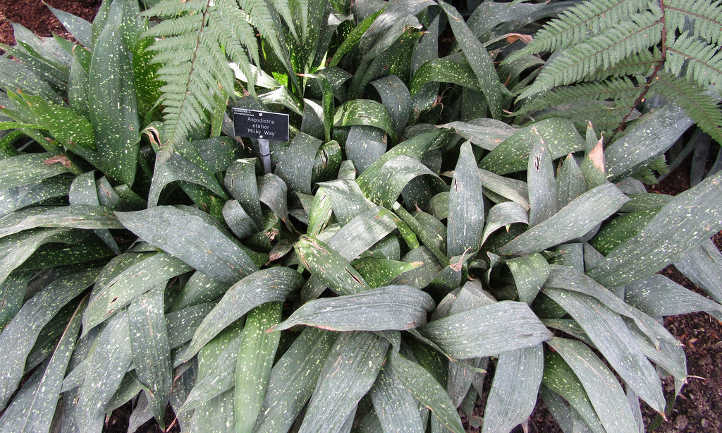
Almost any mid-range lighting is good for cast iron plants. It’s best to avoid total darkness or direct sunlight, but anything else is fair game. Shadier or partial-shady areas of the yard work well. Grown indoors, your cast iron plant will handle low-light environments well. Fluorescent lighting works as well, making them great for office environments.
Temperature-wise, your aspidistra elatior will take a surprisingly-wide range. Avoid frost conditions whenever possible, as frost can damage those broad leaves. Temperature ranges from 45-85 degrees are good. The 60-70 degree range is about perfect, making it perfect indoors.
In colder environments, the plant is a little more at risk. Offer protection when the temperature drops below 40 degrees. Place your plants where they aren’t getting direct wind chill or lots of moisture on their leaves. If the temperature gets close to freezing, bring them indoors. Most cast iron plants can survive temps down to 14 degrees, but suffer major damage. Don’t risk older plants in the chill.
This plant thrives in growing zones 7-11.
Water & Humidity
In low-light areas and cool climates, your cast iron plant care may only involve water every couple weeks, and you let the soil dry. The same is true for indoor plants. If your soil remains moist, don’t overwater!
Aim towards watering when the top inch or two of soil dry. Provide good drainage in your soil so the plant’s roots aren’t sitting in mud. Use a pot with good sized drainage holes, and avoid leaving potted aspidistras in saucers of water, as that can make the soil too wet. Too much water is the enemy here, as with so many other plants. If the roots are sitting in soggy soil, they are susceptible to root rot.
As for humidity, the cast iron plant isn’t picky. Its natural environment is a rainforest floor, so it does well in moist air. They’re also quite tolerant of drier air, especially indoors. As long as the soil’s moist, that’s what’s important!
Aspidistra elatior Soil
Soil for the cast iron plant just needs to drain well. While you want it to remain moist, you never want it to become oversaturated. Most good potting mixes will provide the drainage you need. If you’re uncertain, fill a pot with your mix and give it a thorough watering, then wait a few hours before checking. If it feels damp to the touch, but not gooey, it’ll work well.
If you want to plant your aspidistra in an outdoor bed, run the above moisture test. To fix muddy soils, work in some composted manure and peat moss to absorb water. Break up clay-like soils when blending them. Sandy soils are fine but usually need a little peat just to stay moist.
Mulch around the base of your plants to help keep the soil’s moisture consistent. Mulching also prevents weeds from popping up around your plants, which is a great benefit! Soil pH isn’t a huge concern for these plants. They’ll tolerate slightly acidic or slightly alkaline soil. Avoid going too extreme in either direction, aiming for a balanced range.
Fertilizer for Cast Iron Plants
Depending on the type of fertilizer you use, the frequency will vary. High quality liquid fertilizers, especially those intended for houseplants, should have monthly applications in spring and summer. If you prefer slow-release granular fertilizers, it can be much less frequent. 2-3 month slow release types should be replenished about as often. Avoid fertilizing in the winter.
Be careful not to over feed, even in spring and summer. Too much fertilizer will literally cause your plant to lose its variegation! The leaves will all stay dark green.
Propagation of Cast Iron Plants
When you practice cast iron plant care, avoid transplanting too frequently. Your cast iron plant will tolerate being a bit rootbound, but it doesn’t like its roots disturbed. At most, transplanting should happen every 2-3 years. There’s two reasons to transplant: to propagate new plants or to provide more room for larger ones. I’ll cover propagation in a moment. Let’s go over the latter issue now.
If your plant’s starting to look crowded in its pot, gently slide it out and examine the root mass. If it looks like it’s spiraling around the pot, it’s likely time to transplant. Select a pot which is an inch or two larger than your existing pot and prepare it with your preferred potting soil. Then remove the plant from its old pot. With your fingertips, loosen the roots to untangle them, and then set it in the new pot.
Fill in the potting soil around the plant, keeping it at the same planting level as it’d been before. Water it in to moisten the soil, and top dress with mulch if desired. Many gardeners grow the cast iron plant as an indoor houseplant. However, it can be paired with other plants as well! Some of these include:
- Fuschia
- Columbine
- Foam Flower
- Flax Lily
- Sarcococca
It also makes an excellent layering plant. You can place aspidistra elatior against a fenceline and plant shorter plants in front of it easily.
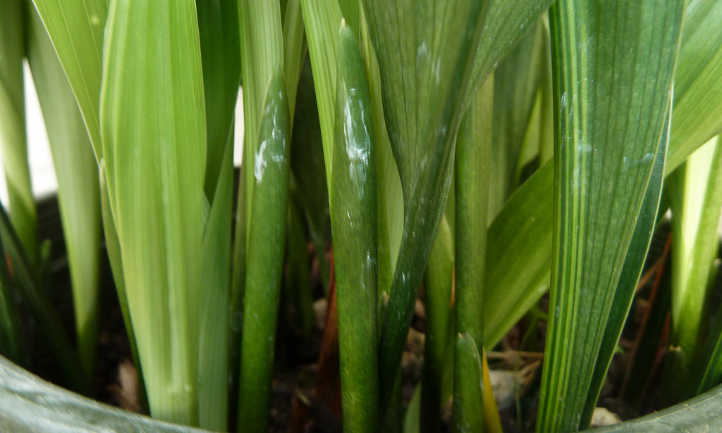
Root division is the most common way to propagate your plants. It’s a very simple process, and you can easily multiply your aspidistra collection! Try to do this in the spring or summer months if possible to allow new plants to establish well.
Remove the plant from its pot. If it’s in a bed, loosen the soil around the plant, then lift it up from underneath the root mass. Be careful not to cut the roots with your shovel. Once you’ve gotten the plant out of its soil, you can dust off any excess loose soil and use your hands to tease it apart. Be sure you get clumps which have at least 2-3 stems.
Place each clump into its own pot, planting at the same height it was originally planted out of direct sunlight. You should have new growth within a month or two.
Pruning Cast Iron Plants
Any pruning for cast iron plant is either cosmetic or removes pests. Of the foliage plants we grow, this one is very self-maintaining. Since it’s slow to grow, you don’t have a constant need to fuss over it. Older dead leaves tend to hide under the green healthy growth. These are easy to remove if you want to, but it’s nonessential. You can also trim off leaves with severe insect damage, although that’s rare. If you do, use a pair of sterilized pruning shears.
Most of the time, pruning just isn’t needed!
Troubleshooting Cast Iron Plant Issues
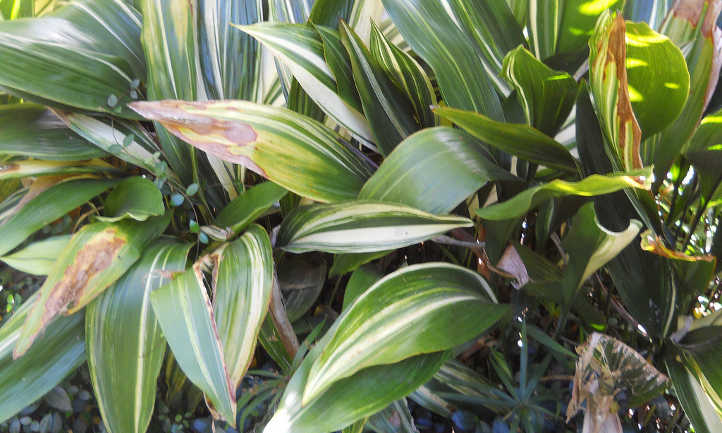
The fact that the cast iron plant is a hardy plant extends to its pest and disease tolerance. It’s not affected by too many of either! Even so, there’s a few pesky pests or diseases that can still cause damage if you aren’t watchful. Let’s discuss what could happen.
Pests of Cast Iron Plants
Spider mites on plants are one of the most annoying pest types for indoor gardeners. They can decimate any plant they infest in a short period of time.
Another common problem is certain types of scale insects. While not all will strike at your cast iron plants, you’ll want to get rid of mealy bugs quickly.
Thankfully, there’s easy solutions for both. Spraying all leaf surfaces with neem oil can prevent these pests from moving in. And when you discover them, use a good insecticidal soap to get rid of them!
Cast Iron Plant Diseases
Aspidistra elatior is susceptible to a number of leaf spot diseases. It’s also susceptible to root rot problems. Both are common problems caused by fusarium, a fungal growth. In the soil, fusarium can wreak major havoc on the rhizomatic roots. Soft rots are common problems. Most of the time providing the right soil and containers with adequate drainage holes will prevent these diseases.
On the leaves, it can create water-soaked spotting that will turn brownish-red in time. Those brownish-red splotches produce fungal spores that can spread. This fusarium blight can be a real pain. I highly recommend using biofungicide in your soil to build up root resistance against fungi. There are biofungicides that are organic and will suppress or prevent many types of root rot issues.
If you notice leaf-spotting, prune off diseased leaves before they form spores. Keep the foliage dry to prevent reoccurance. Avoid over-watering to slow the development of soil-based fusarium.
One other problem is common. Sclerotia rolfsii, sometimes called Southern blight, causes brownish lesions on the stems. It’s also referred to as sclerotium stem rot. As it progresses, the leaves may yellow and wilt, and whitish mycelium can form. Most often, this fungal disease spreads in overly-wet soil. Avoid overwatering, and use a copper-based fungicide spray to treat the issue.
Frequently Asked Questions
Q. My cast iron plant leaves are turning yellow one at a time. What’s happening?
A: If you’ve recently re-potted your plant, it could simply be adjusting to its new environment. Another issue could be a lack of (or too much) water, so make sure your soil’s moist but not soggy. Finally, it can be a sign of Sclerotium stem rot.
Q. How often should I cut back my Aspidistra to keep it under control?
A: It’s a slow-growing plant, so keeping it controlled is fairly easy. If you want to promote all new foliage each year, you can prune it back in the early spring before new growth begins. It’ll leaf back out!
Q: My cast iron plant leaves have brown tips. Help?
A: TIn cast iron plant care, this is usually a sign of watering issues. Too much water will cause the plant to release water from its leaf tips, and they’ll turn brown as a result. Too little can also spawn the problem. Try to keep the soil evenly moist but not wet! Placing the plant in direct sunlight can also cause singed brown leaf tips. Keep it in bright, indirect light.
Q: Does a cast iron plant need sun?
A: They do, but direct sunlight is too much for them. Offset them from direct sunlight, or provide dappled shade.
Q: What are cast iron plants good for?
A: They’re lovely as an indoor plant, or grown under shade trees outdoors. Their lush green leaves provide ground cover too.
Q: How tall does a cast iron plant get?
A: Roughly 2 feet tall.
Q: Should I cut brown tips off cast iron plant?
A: You can! Simply cut the leave to the green part to remove singed, diseased, or soaked leaves.
Q: How long do cast iron plants live?
A: You might want to put this plant in your will! They live 50 years or more.


